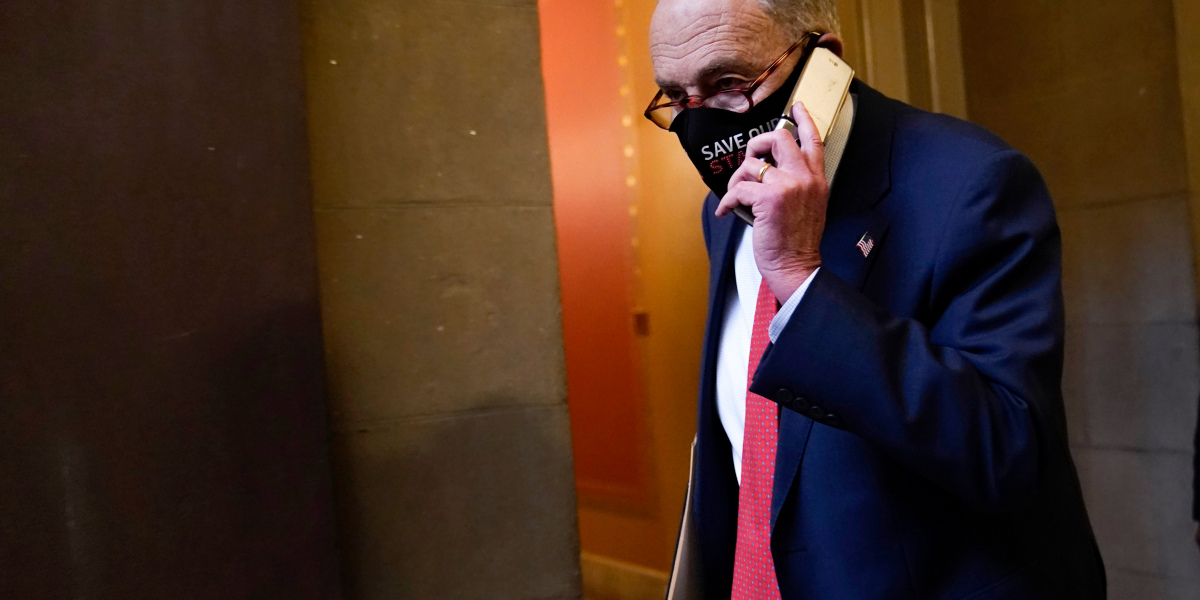Top Washington negotiators, propelled by a late-night agreement on the last major obstacle to a COVID-19 economic relief package, said a Sunday agreement is all but inevitable to deliver long-overdue pandemic aid of almost $1 trillion.
“I am very hopeful that we get this done today,” House Minority Leader Kevin McCarthy, R-Calif., told Fox News Channel’s “Sunday Morning Futures.”
The breakthrough involved a fight over Federal Reserve emergency powers that was resolved by the Senate’s top Democrat and a senior conservative Republican. Aides to lawmakers in both parties said the compromise sparked a final round of negotiations on a handful of remaining issues.
An aide to a key GOP lawmaker said it would likely require all of Sunday to finalize and draft the final agreement, which is already guaranteed to be the largest spending measure yet, combining COVID-19 relief with a $1.4 trillion omnibus spending bill and reams of other unrelated legislation on taxes, health, infrastructure and education.
The measure is finally nearing passage amid a frightening spike in coronavirus cases and deaths and accumulating evidence that the economy is struggling. Lawmakers and aides say it would establish a temporary $300 per week supplemental jobless benefits and $600 direct stimulus payments to most Americans. It would provide a fresh round of subsidies for hard-hit businesses and money for schools, health care providers and renters facing eviction.
President Donald Trump is supportive, particularly of the push for providing more direct payments. “GET IT DONE,” he said in a late-night tweet.
It would be the first significant legislative response to the pandemic since the $1.8 trillion CARES Act passed virtually unanimously in March.
The COVID-19 legislation was held up by months of dysfunction, posturing and bad faith. But talks turned serious last week as lawmakers on both sides finally faced the deadline of acting before leaving Washington for Christmas.
The measure is being added to a $1.4 trillion spending bill and combined with lots of other unfinished work, including previously stalled legislation to extend tax breaks, authorize water projects, and address the problem of surprise sky-high medical bills for out-of-network procedures.
It would be virtually impossible for lawmakers to read and fully understand the sprawling legislation before a House vote expected on Monday. Senate action would follow.
In the meantime, with a government shutdown deadline looming at midnight Sunday, lawmakers faced the reality of needing to enact another temporary spending bill — the second in as many days — to avert a shutdown of non-essential activities by federal agencies on Monday.
Lawmakers had hoped to avoid that step, but progress slowed Saturday as GOP Sen. Pat Toomey of Pennsylvania pressed for the inclusion of a provision to close down Fed lending facilities. Democrats and the White House said it was too broadly worded and would have tied the hands of the incoming Biden administration, but Republicans rallied to Toomey’s position.
The Fed’s emergency programs provided loans to small and mid-size businesses and bought state and local government bonds. Those bond purchases made it easier for those governments to borrow, at a time when their finances were under pressure from job losses and health costs stemming from the pandemic.
Treasury Secretary Steven Mnuchin said last month that those programs, along with two that purchased corporate bonds, would close at the end of the year, prompting an initial objection by the Fed. Under the Dodd-Frank financial overhaul law passed after the Great Recession, the Fed can only set up emergency programs with the support of the treasury secretary.
Toomey defended his provision in a Senate speech, saying the emergency powers were designed to stabilize capital markets at the height of the pandemic this spring and were expiring at the end of the month anyway. Democrats said that Toomey was trying to limit the Fed’s ability to boost the economy, just as President-elect Joe Biden prepared to take office.
“This is about existing authorities that the Fed has had for a very long time, to be able to use in an emergency,” said Sen. Elizabeth Warren, D-Mass. “It’s about a lending authority for helping small businesses, state government, local government in the middle of a crisis.”
Toomey disputed that, saying his proposal “is emphatically not a broad overhaul of the Federal Reserve’s emergency lending authority.” His office issued a statement early Sunday calling the compromise with Schumer “an unqualified victory for taxpayers” that met Toomey’s aim of shutting down the emergency facility.
The emerging agreement on virus aid would deliver more than $300 billion in aid to businesses as well as the extra $300-per-week for the jobless and renewal of state benefits that would otherwise expire right after Christmas. It included $600 direct payments to individuals; vaccine distribution funds; and money for renters, schools, the Postal Service and people needing food aid.
The governmentwide appropriations bill would fund agencies through next September. That measure was likely to provide a last $1.4 billion installment for Trump’s U.S.-Mexico border wall as a condition of winning his signature.
More must-read finance coverage from Fortune:
- Upstart CEO talks major IPO “pop,” A.I. racial bias, and Google
- Biden wants to change how credit scores work in America
- Term Sheet readers predict which markets will boom in 2021
- Why investors jumped on board the SPAC “gravy train”
- Citron calls this the “most ridiculous” IPO of 2020

